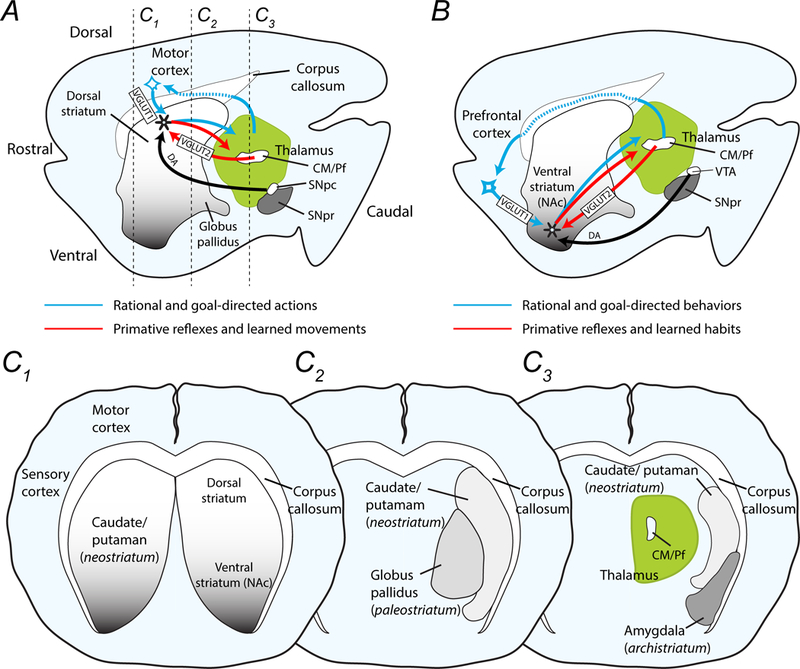Figure 1.

Drawings demonstrate the major components of the striatal network in mice and the proposed circuits involved in reflexive and rational actions and behaviors. (A) The midline sagittal section shows the dorsal and ventral striatum caudal to the motor and prefrontal cortex. The thalamus, which includes the centromedian and parafascicular nuclei (CM/Pf), is posterior to the striatum and dorsal to the substantia nigra pars compacta (SNpc) and pars reticulata (SNpr). Movements are encoded in the dorsal striatum, while (B) decisions and behaviors are programmed in the nucleus accumbens (NAc) of the ventral striatum. Rational and goal-directed action and behaviors rely on corticostriatal-thalamocortical loops (blue arrows), while reflexive movements and behaviors depend on communication between the thalamus and the striatum (red arrows). These two pathways are modified by dopamine projections from the SNpc to the motor striatum and by dopamine afferents from the VTA to the NAc. (C1-C3) Coronal sections moving from rostral to caudal, as indicated in panel A, show the medial placement of the globus pallidus (palaeostriatum) and the ventrolateral placement of the amygdala (arachistriatum). The caudate and putamen that comprise the neostriatum are not separate structures in mice as they are in humans.
